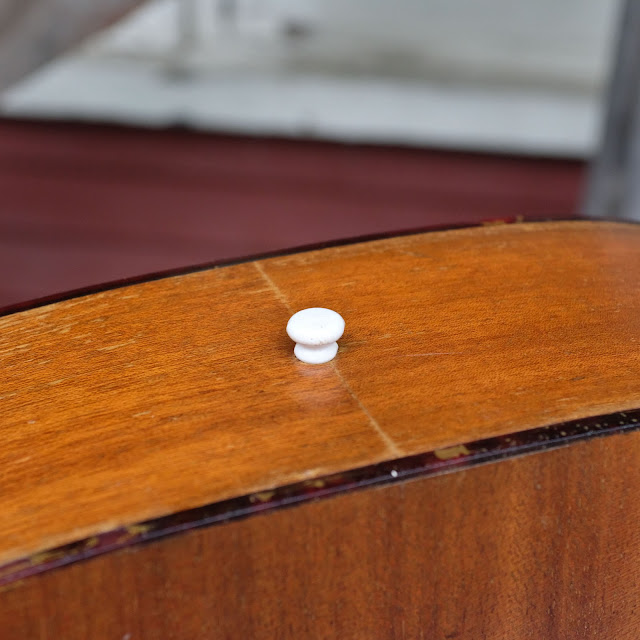1960s Harmony H162 000-Size Flattop Guitar
A customer of mine bought this for probable resale and sent it in a very long while ago. It's been languishing because it needed "all the usual Harmony stuff," but as I owed the owner a slot in the lineup and a few people have been asking, I figured I might as well get it ready -- right?
This is an earlier H162 and probably dates to the early '60s. Like its fancier brother the H1203, it's solid spruce (ladder-braced) over solid mahogany back and sides. Unlike the mahogany neck and fancy binding of the H1203, though, this model has simple tortoise binding and a poplar neck. The fretboard and bridge are still rosewood, though.
I find that once I dial these guitars in, they have a great, woody, fingerpicking tone that's not quite like any other make. I'm not as amazed at their flatpicking tone, however, until I use something like a heftier-weight Blue Chip (or Wegen, or similar) pick that pulls the "heart of darkness" out of these things. That's what I'm using in the soundclip which is why those flatpicked leads sound folksy-good.
Work included a neck reset, bridge reglue, fret level/dress, new/recut saddle slot, new bone saddle, cleaning, some stabilization to the binding (as it's rotting in a few places here and there), and a good setup. It has a straight neck (these have steel-bar reinforcement) and the action is spot-on.
Specs are: 25 1/8" scale, 1 3/4" nut width, 1 1/2" string spacing at the nut, 2 1/4" spacing at the bridge, 15 3/8" lower bout, 11 5/8" upper bout, and 3 3/4" side depth at the endblock. Action is 3/32" EA and 1/16" DGBE at the 12th fret. I have it strung with a custom set which is basically "11s" on the bottom and "12s" on the top -- 52w, 38w, 28w, 22w, 16, 12. It's just about perfect for these non-truss Harmony flattops with ladder bracing. The back of the neck is a medium C-shape and the board has a 10-12" or so radius.
The guitar itself is all-original except for the new saddle and the tuners which are parts-bin '60s scrounged ones (as this had kit-bashed icky ones on it that were unoriginal and terrible). It's also crack-free and looks great, with a buttery-aged top.
The lower-rung radiused-board Harmony products definitely show machine tooling marks on their fretboards as a standard factory "feature." They look like they've been sanded with 60 grit across the grain and left like that.
I love how the bridge has original bolts still in it. Hee hee. This one was "reglued" in a shabby fashion beforehand with something like KrazyGlue.
Nice mahogany, right?
The tuners are nothing special but they work just fine.


















Comments